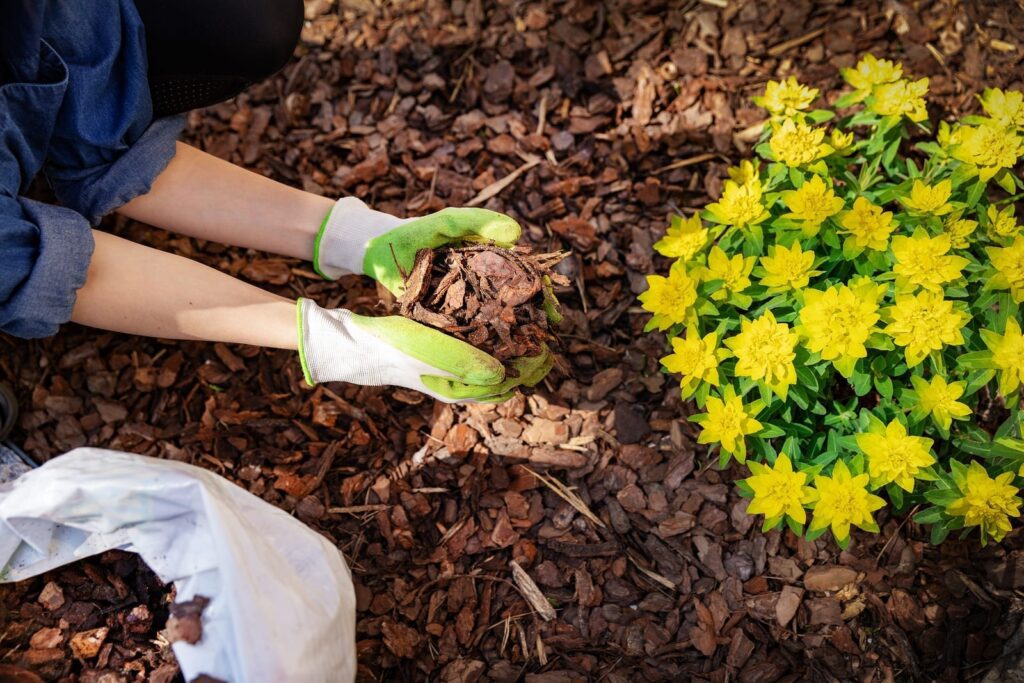What Do I Need to Do to Prepare My Garden for Winter?

Late October shows that the summer ends. You wake up every day and ask yourself if today is the day you put it all down to rest. Okay, you maybe stay longer than you ought to because you are in denial about what’s about to happen.
Though some gardeners may appreciate the respite that winter brings, you are simply seeking more opportunities to thrive in the chill. You enjoy being in a place that has all four seasons; you just hope winter was a tad shorter! But then reality sets in, and one must do some winterizing in the garden.
In your zone, 7b, in Albuquerque you have a long cold winter. You’ve got a solid four-month window with temps between 20 and 40 degrees F.
The ground is rock solid frozen, everything dies back, field winds blow, and if you don’t prep for it, you can really get the structures and systems you put in place for your summer garden hammered by the elements.
But winter garden preparation is not merely about safeguarding what exists so that it can bide its time until the next fruitful season.
This is also the ideal time to begin planning for any new plantings you may wish to incorporate into your garden next year. So, let’s get into what you are doing to prepare your garden for winter.
Clear and compost dead plants
The first step to preparing the garden for winter, is to attempt to start with a clean slate. Not only does this clean up space, but it helps with disease issues as well since dead plant material can harbor diseases over the winter months.
For healthy plants with no disease all season long, you may do some in place composting by chopping and dropping . To terminate a plant, simply chop the plant off at the base, breaking any larger branches or pieces into parts that can easily decompose and laying on the soil in your garden bed.
The plants will decompose during the winter months, providing nutrients to the soil. But if you suspect disease on your plant, or are even unsure, it is best to remove the entire plant at the root.
Add frost covers
You probably own at least a few that can tolerate cooler temperatures and, with some thoughtful planning, you can plan to be harvesting into December.
Brassica family plants, for example, develop a naturally occurring anti-freeze that converts to sugars after a frost, improving the flavor of the plants. But you can prolong their life even more by using frost covers which act like a cozy winter blanket to protect them from the wind chill and moisture that is the most damaging for these cold hardy plants.
These covers protect the plants from doing direct contact with rough frost as they keep warm air around them and they are especially effective at prevent frost damage. This is an easy measure to protect your garden and prolong your harvest.
Look for abandoned tools
Do a quick inventory of your garden tools and walk around the yard to locate any tools that may have been left to rust; you don’t want your valuable tools deteriorating in the cold, wet weather.
Then, perhaps you could plan for next year to have a drop point in your garden where you can drop off tools without having to remember to walk them back to the shed.
Oil and clean tools
You have resurrected your tools that you abandoned, now is a great time to pamper them. Use a dry brush to remove any dirt, sharpen the blades and rub a light coat of oil to prevent rust and to keep your tools very nice.
With your more precious tools it is worthwhile to learn how to take apart and oil any internal parts.
You know, little pieces, but if you’re willing to spend some time looking at how to YouTube videos anybody could do it if they had an hour or two to kill. It is a small effort that is worth the reward come springtime when you can get right to gardening instead of spending time wrestling with rusty, broken tools.
Disconnect hoses
Burst pipes due to frozen hoses lead to expensive repairs. To prevent this from happening, the hoses should be disconnected and drained prior to the expected drop in temperature. In most newer homes, but, each exterior spigot should have its own shut off.
Keeping them in a shed or garage protects them well and they will be waiting and in good condition when it is time to plant again.
Make leaf mold
The more leaves you can “leaf” on the ground, the better off your lawn and local wildlife will be. But, if you must rake your leaves, make them into leaf mold. A designated area for leaf decomposition will produce a wonderful, crumbly leaf mulch that is a wonderful soil conditioner that can enhance the structure and fertility of your garden soil. It’s the natural way to reuse the bounty from nature and it’s good for your garden.
Wrap trees
In my extreme cold climate, and particularly for young trees or trees susceptible to winter injury, it is beneficial to wrap the trees with burlap or tree wrap.
The bark is insulated from extreme winter temperatures, which helps to avoid sunscald and frost cracks. This is a very easy to do preventative practice, which can lead to the health of your trees long term.
Mulch perennials
We are not alone in needing an extra blanket or two during winter. Mulch can also be applied in the form of wood chips, pine needles or straw around perennial plants.
This provides insulation for the roots during colder and hotter temperatures. It also holds moisture and prevents weeds, which is all good for your garden beds in the winter. A general guideline is to apply four to six inches of mulch around your plants – just avoid piling mulch directly against the plant. We are insulating the roots not the shoots.
Empty outdoor planters so they don’t crack
The expansion and contraction of the soil in your container can result in cracking of clay or ceramic pots with repeated freeze/thaw cycles.
To prevent this from happening, empty your breakables’ soils out of their containers, or, if possible, move them to a shaded area. This one easy step will help keep your pots whole and ready for planting come spring.
Prep new garden bed areas with cardboard and compost
If you are planning new beds for the next growing season, winter is a great time to begin establishing them via the lasagna method. Use untreated cardboard as a weed and grass barrier, covering it with compost, leaves or straw. This will not only help to fertilize the soil but also give you a clean slate to grow your future garden with no weeds.
Cover crops
One intelligent choice to preserve and enrich your garden soil is to sow cover crops like winter rye or clover in the fall.
These crops also help control erosion and weeds while adding organic matter as they break down. When spring comes along, you can easily mix them into the soil, feeding your plants.
Cover raised beds
This is more specific to my raised beds, since they are not ground level beds. Though my raised beds are made of cedar so they are weather resistant, to extend their life as long as possible I have firewood rack covers that fit them perfectly.
These covers protect your beds from rain, but can make the soil hydrophobic if left to totally dry out during the winter months, and are generally not recommended for standard raised beds.
Also, since your raised beds might have wicking trays within them, detach the tubes from beneath so that water won’t be stagnant in the beds all winter. The arch trellises are powder coated, thus they will be just fine out in the elements over winter.
